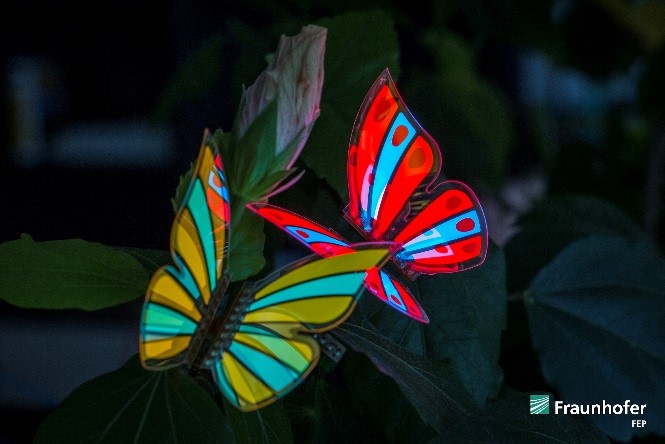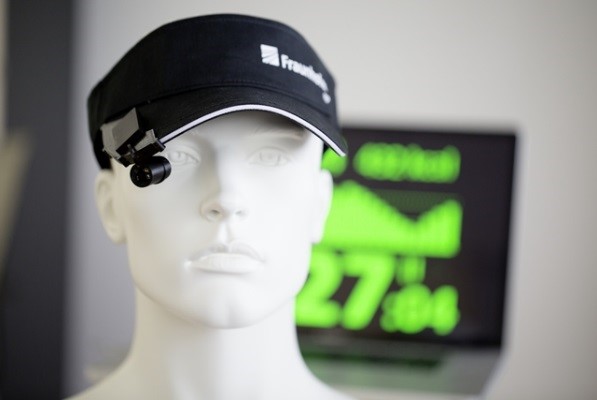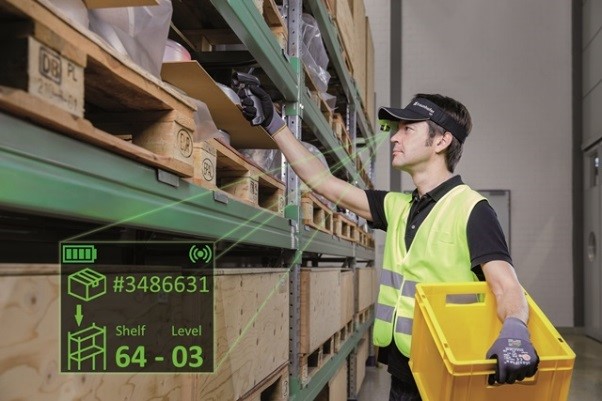Hannover Messe
Flexible OLEDs designed for the use in wearables at the Hannover Messe 2019
An organic light-emitting diode (OLED) consists of a thin organic layer system (approx. 200 - 400 nanometers) located between two electrodes (anode and cathode). Applied in a vacuum on a flexible foil or metal substrate, this surface light source is thinner than two millimeters. When a current is applied, light is generated within the layer system, which then emerges through one of the electrodes. In contrast to conventional light sources, OLED light modules distribute a flat light with high color quality that is very pleasant for the human eye. A further advantage: The area light of OLEDs does not dazzle. This means that OLEDs do not need reflectors to reduce the dazzling effect. Therefore, OLEDs are one of the most efficient light sources.
Flexible OLEDs offer designers an unlimited tool for designing and integrating new area lighting. Their unique features such as flexibility, transparency, polychromy and segmentation offer particular advantages. Whether input, processing, output, sensors or actuators, power supply or networking - everything can be integrated in one component. Such a component could be used, for example, in architecture, interior design, medical applications, and aviation, as a lightweight lighting alternative or for various touch display applications in the automotive industry.
Ultra-low-power OLED microdisplays for wearable displays
Ultra-low-power OLED microdisplays are particularly suitable for displaying simple information in wearables. They have a limited resolution, but the power consumption is reduced to a fraction of about 1 mW. This innovative approach to display backplane design allows longer battery life while maintaining small, lightweight systems. One application area, for example, is disaster control, where displays in helmets of emergency forces receive navigation data via Bluetooth from the control center and thus guide them through visually impaired environments.
The Fraunhofer FEP offers many years of experience as well as technological know-how covering numerous processes of customized development and the integration of OLEDs on substrates such as stainless steel, ultra-thin glass, plastic or other materials. At the Hannover Messe 2019 the Fraunhofer FEP exhibits an OLED design kit and an ultra-low-power OLED microdisplay.
The Fraunhofer Group for Light & Surfaces
Further information about the Hannover Messe 2019 and on the exhibits exhibited by the Fraunhofer Light & Surfaces Group can be received on a regular basis on our homepage under “Press & Events”.
The Fraunhofer Group for Light & Surfaces brings together the expertise of six Fraunhofer Institutes. The institutes combine coordinated competencies in the fields of laser manufacturing processes, laser beam sources, metrology, medicine and life sciences, optical systems and optical manufacturing, EUV technology, process and system simulation, materials technology, micro- and nanotechnology, thin-film as well as plasma and electron beam technology.


